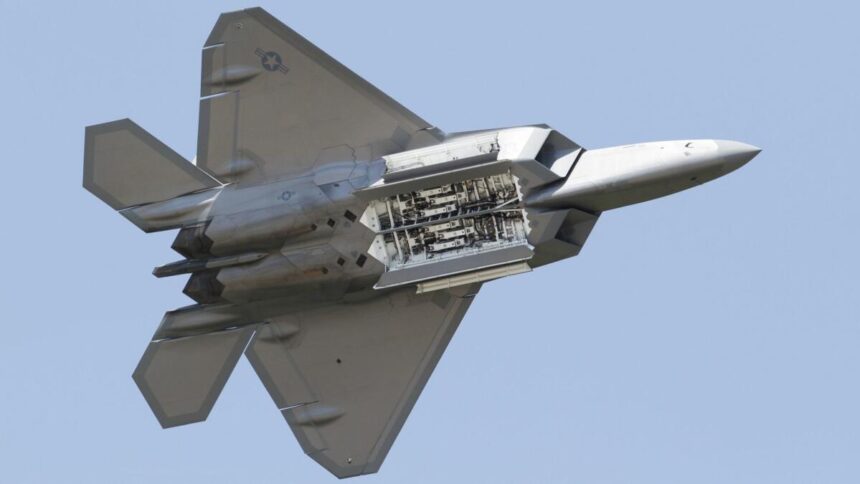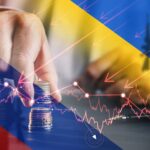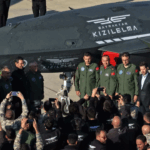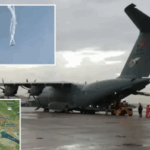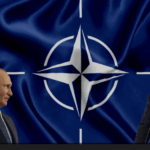Summary & Additional Remarks by Geopolist | Istanbul Center for Geopolitics:
Analysts have long pointed to America’s unmatched aerial capabilities, from the Gulf War through the conflicts in Iraq and Afghanistan, as a cornerstone of its global military dominance. Today, however, that edge is increasingly in question, particularly in the Indo-Pacific. China’s rapid development and deployment of new systems—from fifth-generation fighters and hypersonic munitions to sophisticated anti-access/area-denial (A2/AD) networks—significantly complicate the US Air Force’s ability to maintain the kind of uncontested superiority it once enjoyed.
A key element of this shift involves China’s modernization of the People’s Liberation Army Air Force (PLAAF). Over the last two decades, Beijing has replaced much of its older fleet—often consisting of Soviet-era designs—with indigenously produced fourth- and fifth-generation aircraft. The Chengdu J-20 stealth fighter stands out as one of the most visible symbols of this transformation, showcasing not just advanced aerodynamics and stealth coatings but also increasingly sophisticated avionics. Additional platforms like the J-16, a multirole strike fighter, and a growing roster of drones, such as the WZ-7 and WZ-8, bolster China’s capacity to perform intelligence, surveillance, and reconnaissance as well as long-range strikes. Indigenous engine manufacturing, once a significant Chinese weakness, has improved thanks to heavy government investment and focused technology transfers, gradually reducing China’s reliance on foreign suppliers.
Beyond the aircraft themselves, China’s layered air defense network—part of its broader A2/AD strategy—has gained both range and accuracy. A combination of over-the-horizon radars, advanced surface-to-air missile systems (such as the HQ-9B and the imported Russian S-400), and an expansive ballistic missile force give the PLAAF and the People’s Liberation Army Rocket Force (PLARF) powerful tools to hold large swaths of the Western Pacific at risk. American carriers, forward-deployed bases (like those in Okinawa and Guam), and essential assets—such as aerial refueling tankers and early warning aircraft—could be forced to operate from greater distances if conflict ever arose, eroding the US ability to project air power swiftly.
Emerging Chinese hypersonic programs further exacerbate these concerns. While the US retains a technological lead in certain areas—stealth bombers like the B-21 Raider, cutting-edge electronic warfare, and integrated command-and-control networks—Beijing’s testing of high-speed, maneuverable missiles signals an intent to target critical US platforms in flight. Chinese government-affiliated scientists have gone on record discussing the progress of “next-generation” air-to-air missiles that could theoretically knock out high-value US aircraft before they can respond. If mass-produced, such systems would jeopardize key US force multipliers, from aerial refueling tankers to electronic warfare jets, which are essential in any major operation across the Pacific.
Meanwhile, critics argue that internal US constraints—from budget disputes and bureaucratic red tape to lengthy development timelines for new fighters—hinder Washington’s capacity to adapt quickly. Efforts like the Next Generation Air Dominance (NGAD) program represent ambitious plans for future air supremacy, but they will take time to mature. The F-35, America’s premier fifth-generation fighter, still faces issues related to maintenance, cost overruns, and software integration that hamper its readiness. Legacy platforms like the F-15, F-16, A-10, and B-52 remain in service well past their intended lifespans, partly to maintain force structure while newer technology comes online.
From a strategic point of view, the narrowing gap in air combat capability points to a broader recalibration of the global power balance. The US Air Force, still regarded as the world’s most capable, can no longer take for granted the uncontested skies that characterized much of its post–Cold War history. Policymakers in Washington are therefore rethinking force structure, basing arrangements, and allied cooperation, looking to spread out assets, enhance regional partnerships, and invest in robust missile defense. The ability to counter China’s evolving aerospace might may hinge on these multifaceted measures, combined with a clear-eyed commitment to accelerating research, development, and procurement of next-generation systems.
In sum, while American air superiority is not gone, it is becoming more difficult to assert as China’s own capabilities expand in both quality and quantity. The United States can still project formidable power worldwide, but doing so in the Indo-Pacific—China’s backyard—now involves a level of risk and complexity that simply did not exist two or three decades ago. How effectively Washington meets this challenge will help determine whether it can continue to deter rivals and reassure allies in an era of intensifying great-power competition.
Read more here.

